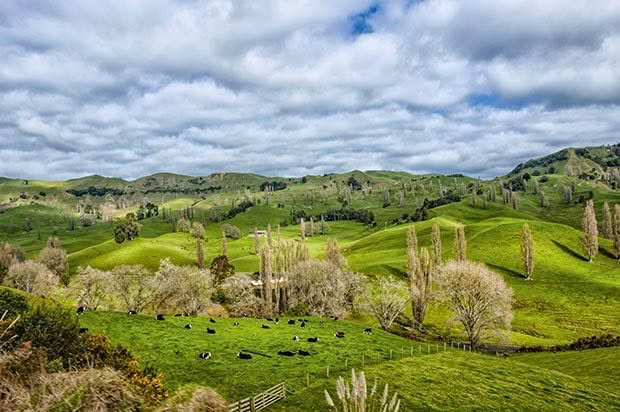10 plus trees for fire resistant shelter belts

Climate change research predicts that Canterbury and other rural areas in NZ will be hotter, drier places in the next few decades. Vegetation to prevent the spread of fire will become an important factor for many country properties.
Shelterbelt trees are an important, long-term planting on farms of all sizes, so what are the best ones to choose?
Tim Curran is an ecologist and lecturer at Lincoln University who has been researching flammability of plants grown in NZ. His work recommends low-flammability native species for shelter belts:
• Broadleaf species (Griselinia spp.)
• Coprosma spp.
• Pseudopanex (five-finger, lancewood)
• Pittosporum eugenioides (lemonwood)
He notes these species are slower growing than the standard pines and macrocarpa often used for shelterbelts so a compromise might be to plant the slow-growing natives and intersperse them with fast-growing non-natives, then remove the big trees as the native ones mature.
Note: if the weather is hot and dry enough, even low flammability species are likely to burn.
Dr. Curran’s research team is currently conducting flammability tests on shelterbelt species in order to make objective recommendations for fire break plantings, lines of low flammability species that could serve as fire breaks in the greater Canterbury landscape. Other low flammability native options include:
• Carpodetus serratus, putaputaweta
• Coprosma grandifolia, raurekau, kanono
• Coprosma repens, taupata
• Coprosma robusta, karamu
• Corynocarpus laevigatus, karaka
• Fuchsia excorticata, kotukutuku/fuchsia
• Geniostoma ligustrifolium, hangehange
• Griselinia littoralis, papauma/broadleaf
• Griselinia lucida, puka
• Macropiper excelsum, kawakawa/pepper tree
• Pseudopanax arboretum, five finger
• Pseudopanax crassifolius, horoeke/lancewood
• Solanum aviculare, poroporo
5 TERRIBLE TREES TO PLANT OR USE AS SHELTER
• Eucalyptus, eg manna gum (E. viminalis) which is high in natural oils
• Pines, eg Pinus radiata (especially when it retains dead material)
• Gorse (especially old gorse hedges with high levels of dead material)
• Kanuka (Kunzea ericoides)
• Manuka (Leptospermum scoparium)
Love this story? Subscribe now!
 This article first appeared in NZ Lifestyle Block Magazine.
This article first appeared in NZ Lifestyle Block Magazine.
